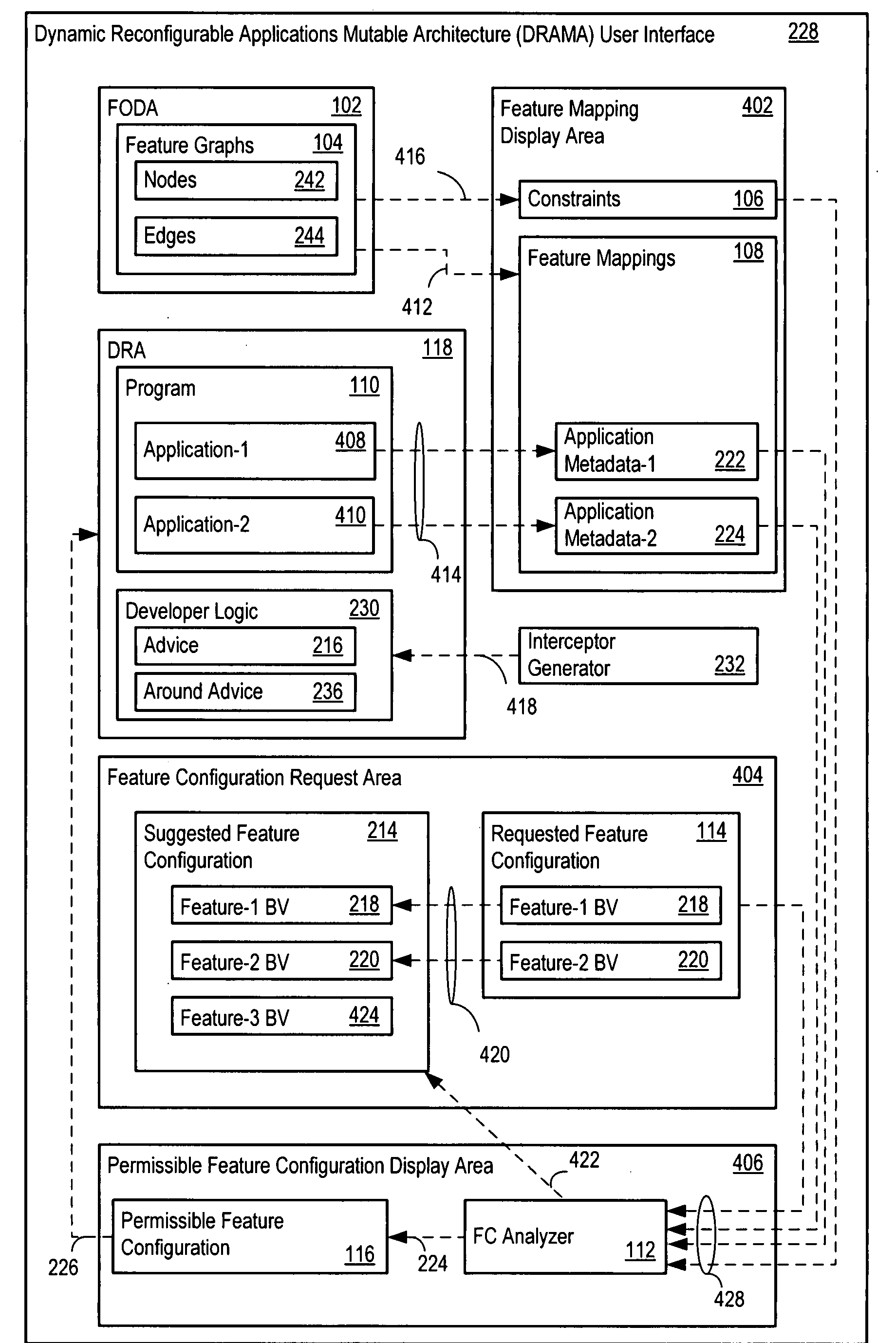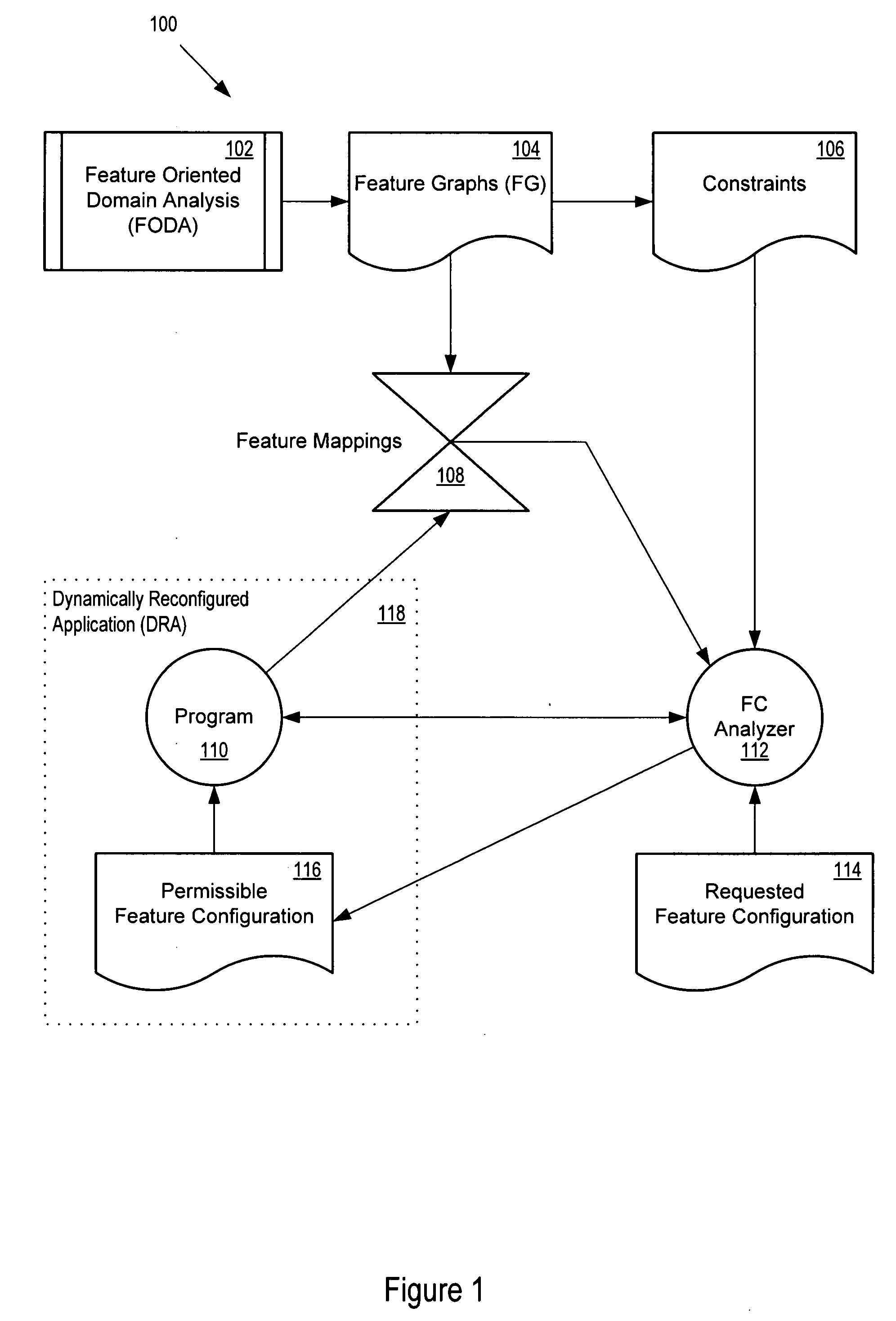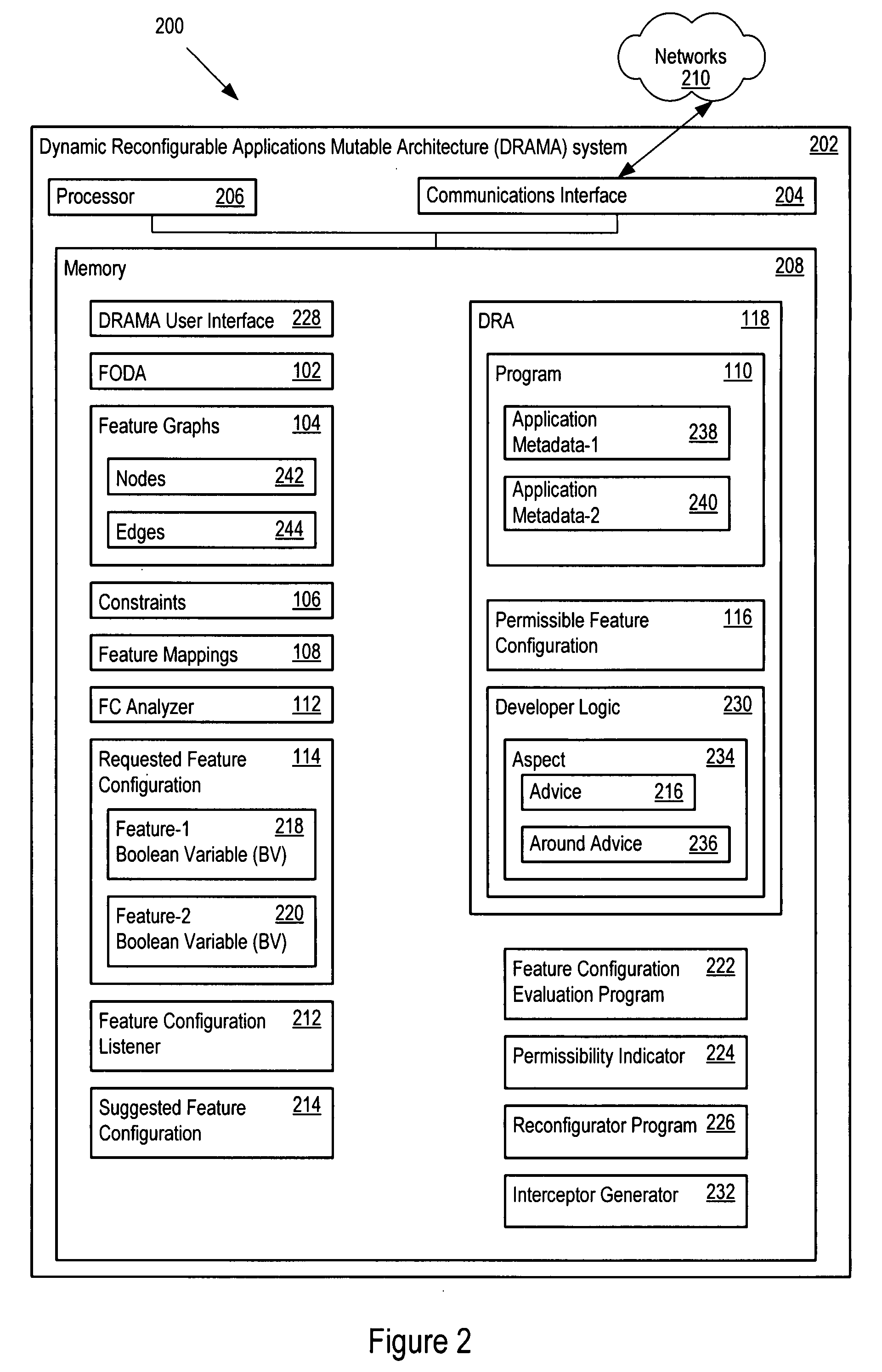Feature configuration analysis tool
a technology of feature configuration and analysis tool, applied in the field of feature configuration analysis tool, can solve the problems of economic infeasibility of shipping a different version, rapid and complete, commercial-strength large-scale software system find, etc., and achieve the effect of facilitating the creation of dynamically reconfigurable applications (dras)
- Summary
- Abstract
- Description
- Claims
- Application Information
AI Technical Summary
Benefits of technology
Problems solved by technology
Method used
Image
Examples
Embodiment Construction
[0030]The FC analyzer identifies permissible feature configurations for a product line so that vendors can offer consumers highly customizable products. The FC analyzer provides vendors the ability to offer consumers an extensive selection of feature configurations for products, accept customized feature configurations from customers, and implement the features for the customer. A vendor may embed the FC analyzer into a user interface that enables consumers to consider feature configurations prior to purchasing a product. The FC analyzer provides an efficient approach to rapidly determine permissible feature configurations for a product line, and verify the validity of a user requested combination of features. Organizations currently spend considerable time and money to determine the permissibility of feature configurations for a product line.
[0031]In one implementation, the FC analyzer provides vendors the ability to consider each feature configuration a product of a product-line-a...
PUM
 Login to View More
Login to View More Abstract
Description
Claims
Application Information
 Login to View More
Login to View More - R&D
- Intellectual Property
- Life Sciences
- Materials
- Tech Scout
- Unparalleled Data Quality
- Higher Quality Content
- 60% Fewer Hallucinations
Browse by: Latest US Patents, China's latest patents, Technical Efficacy Thesaurus, Application Domain, Technology Topic, Popular Technical Reports.
© 2025 PatSnap. All rights reserved.Legal|Privacy policy|Modern Slavery Act Transparency Statement|Sitemap|About US| Contact US: help@patsnap.com



